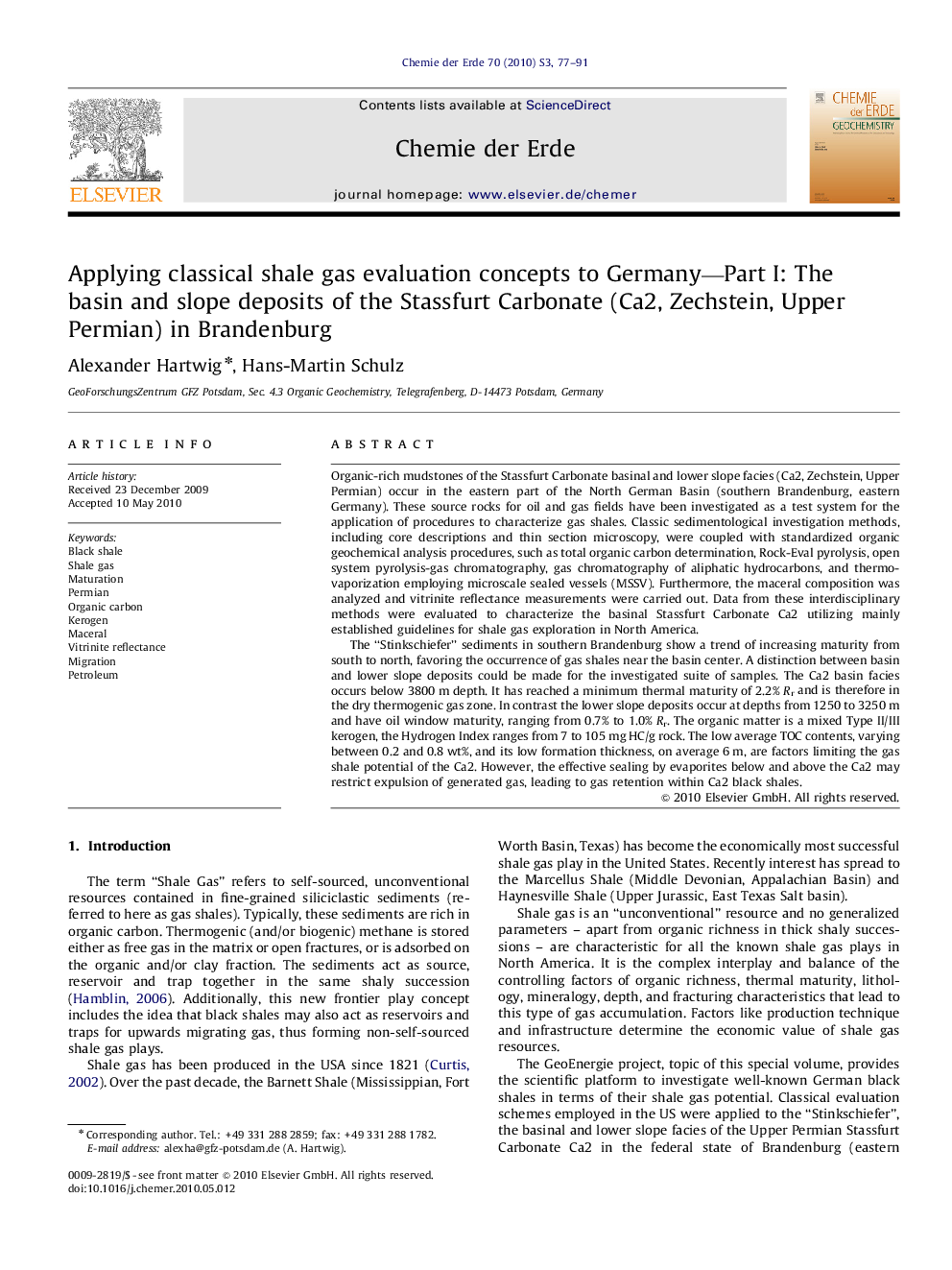| کد مقاله | کد نشریه | سال انتشار | مقاله انگلیسی | نسخه تمام متن |
|---|---|---|---|---|
| 4407104 | 1307347 | 2010 | 15 صفحه PDF | دانلود رایگان |

Organic-rich mudstones of the Stassfurt Carbonate basinal and lower slope facies (Ca2, Zechstein, Upper Permian) occur in the eastern part of the North German Basin (southern Brandenburg, eastern Germany). These source rocks for oil and gas fields have been investigated as a test system for the application of procedures to characterize gas shales. Classic sedimentological investigation methods, including core descriptions and thin section microscopy, were coupled with standardized organic geochemical analysis procedures, such as total organic carbon determination, Rock-Eval pyrolysis, open system pyrolysis-gas chromatography, gas chromatography of aliphatic hydrocarbons, and thermovaporization employing microscale sealed vessels (MSSV). Furthermore, the maceral composition was analyzed and vitrinite reflectance measurements were carried out. Data from these interdisciplinary methods were evaluated to characterize the basinal Stassfurt Carbonate Ca2 utilizing mainly established guidelines for shale gas exploration in North America.The “Stinkschiefer” sediments in southern Brandenburg show a trend of increasing maturity from south to north, favoring the occurrence of gas shales near the basin center. A distinction between basin and lower slope deposits could be made for the investigated suite of samples. The Ca2 basin facies occurs below 3800 m depth. It has reached a minimum thermal maturity of 2.2% Rr and is therefore in the dry thermogenic gas zone. In contrast the lower slope deposits occur at depths from 1250 to 3250 m and have oil window maturity, ranging from 0.7% to 1.0% Rr. The organic matter is a mixed Type II/III kerogen, the Hydrogen Index ranges from 7 to 105 mg HC/g rock. The low average TOC contents, varying between 0.2 and 0.8 wt%, and its low formation thickness, on average 6 m, are factors limiting the gas shale potential of the Ca2. However, the effective sealing by evaporites below and above the Ca2 may restrict expulsion of generated gas, leading to gas retention within Ca2 black shales.
Journal: Chemie der Erde - Geochemistry - Volume 70, Supplement 3, August 2010, Pages 77–91